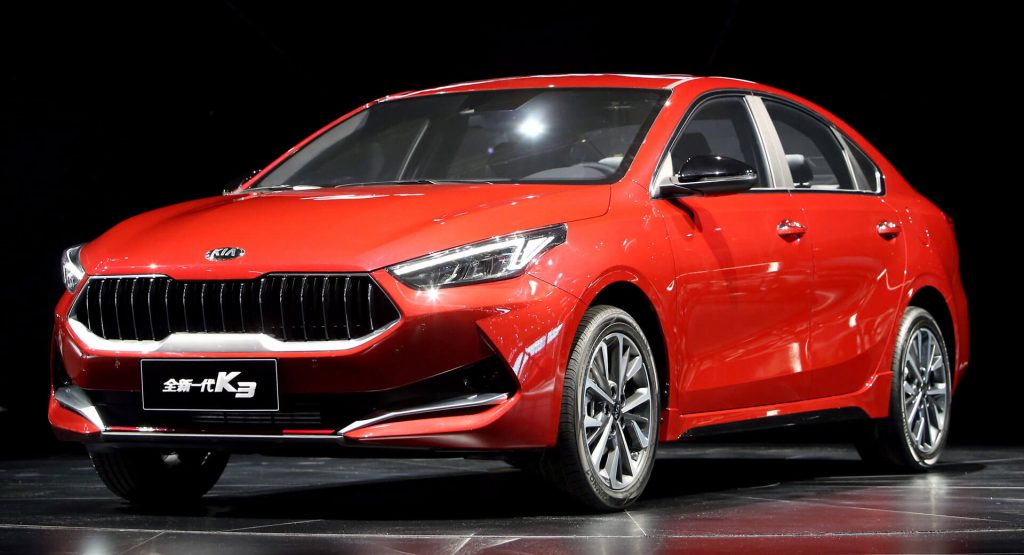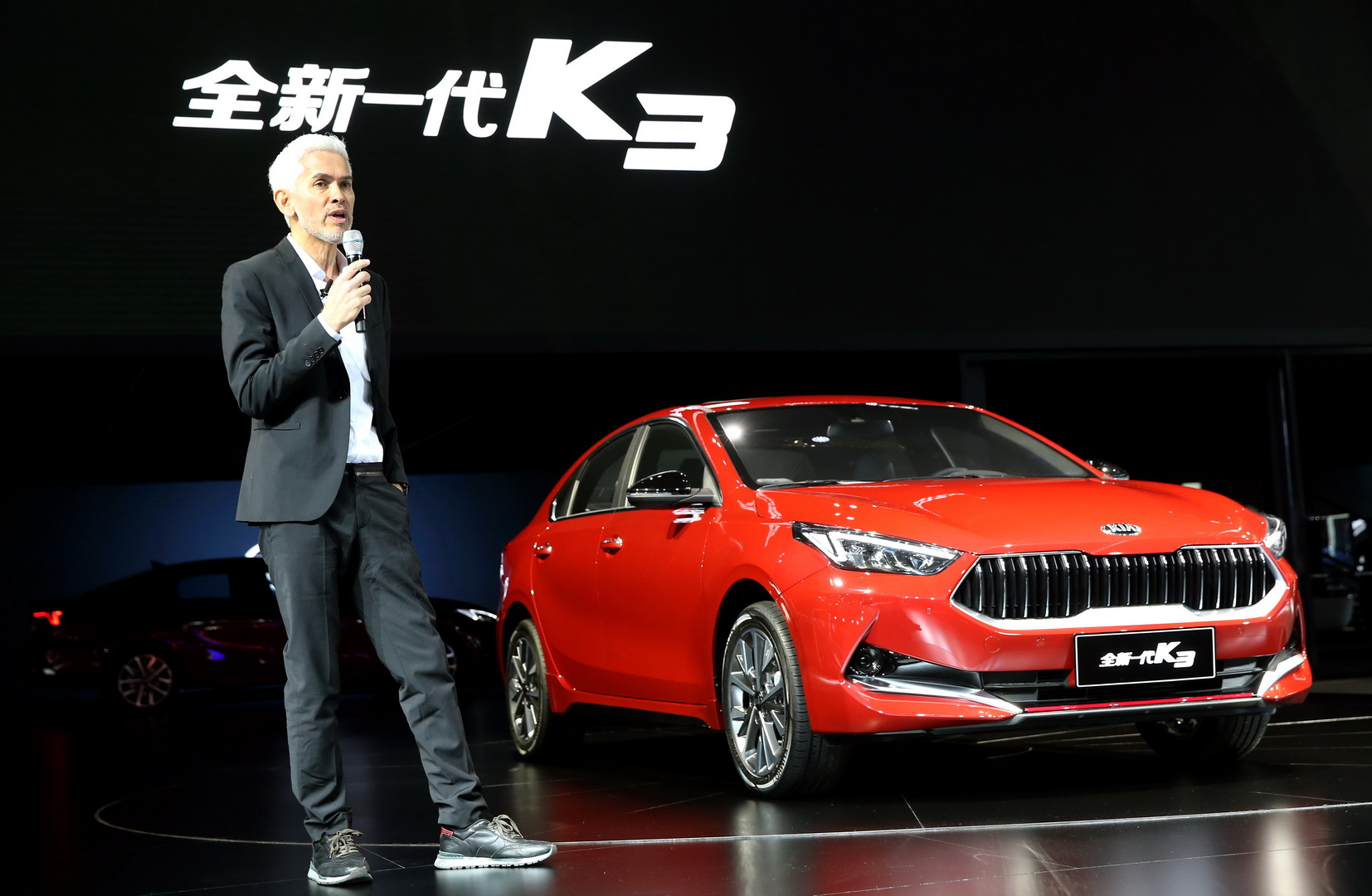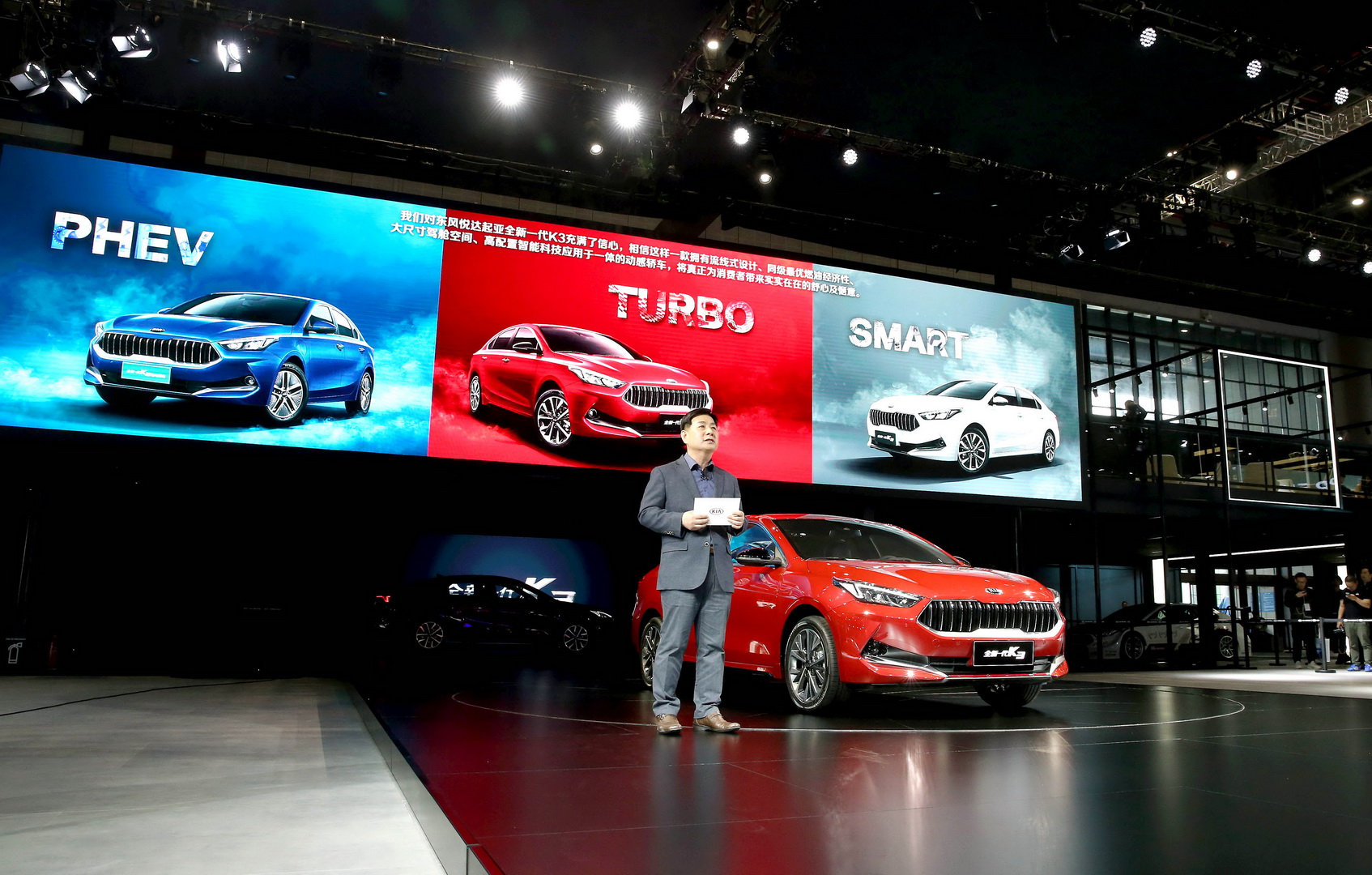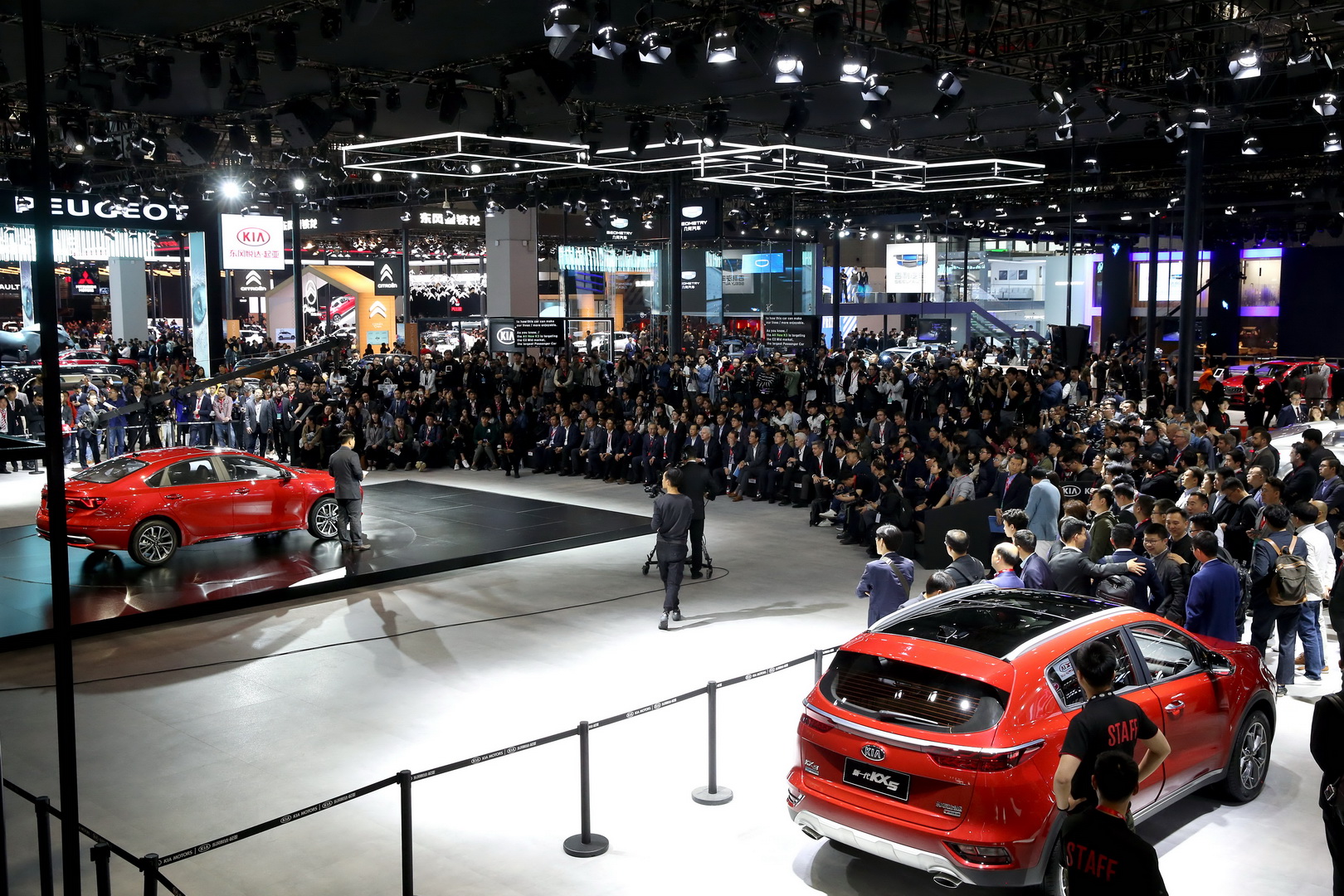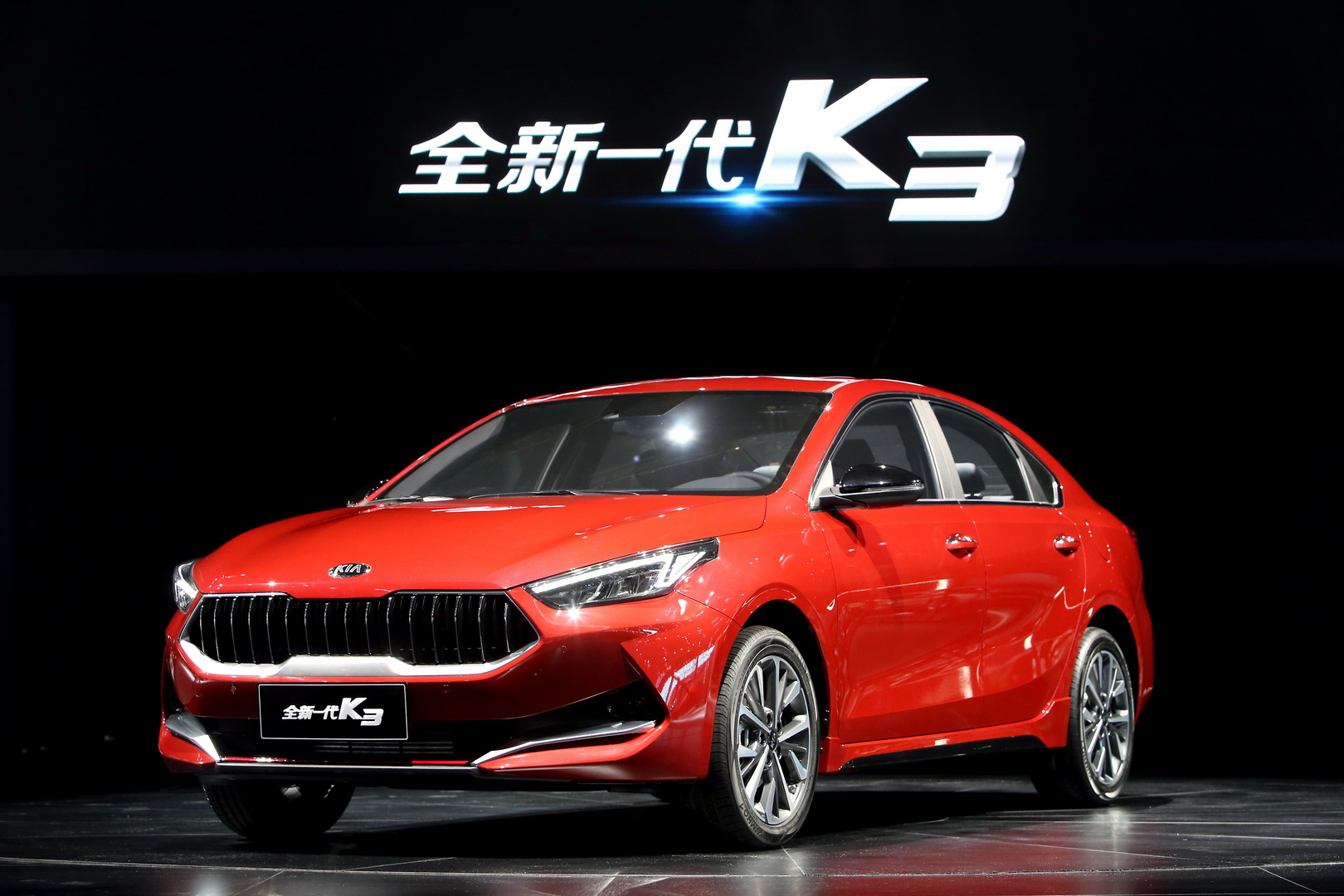Kia has brought the 2020 K3 (aka the Forte in North America) to the 2019 Shanghai Auto Show, offering a first official glimpse of its exterior styling and powertrains aimed specifically at the local market.
Designed, developed and made in China by the Dongfeng Yueda Kia Motors (DYK) joint venture, it’s the latest version of the mid-size sedan and will go on sale in the second quarter of the year.
Customers will get to choose between two gasoline engines, a 1.5-liter said to offer “best-in-class fuel efficiency” and a 1.4-liter turbo, as well as a new plug-in hybrid powertrain. Kia has not released any specifications just yet, so we guess it’ll probably announce them close to the car’s on-sale date.
Visually, the 2020 K3 sports a unique light signature in the headlamps and tail lamps. More importantly, though, it has a grille with vertical slats that, if you squint hard, could look similar to that of certain Maserati models. The PHEV version adds ‘ECO plug-in’ badges on the outside and a special function for the infotainment system that allows users to search for recharging locations nearby.
Also Read: New Kia Habaniro Concept Looks Like One Spicy Crossover
“The K3 has been designed and engineered with Chinese drivers in mind, and is built locally with a range of features and characteristics aimed at exceeding the high expectations of young Chinese drivers”, said VP and Head of Brand and Marketing Group at DYK, Jay Yoon. “With more space and technology than ever and a stunning new design inside and out, the new model isn’t just a rational choice, but a highly desirable one, too.”
Aside from the new K3 models, DYK also has the new China Touring Car Championship (CTCC) competitor on display in Shanghai, which will enter the competition this year. Additionally, the Imagine by Kia Concept, which was presented in Geneva last month, makes its local debut.
Finally, the Korean brand has a range of technologies on display, too, which look at the post-autonomous driving era. The Real-time Emotion Adaptive Driving (R.E.A.D.) system, which promises to “improve the human mobility experience”, is one of them. It works by optimizing and personalizing the cabin by analyzing the driver’s emotional state using AI-based bio-signal recognition, tailoring the cockpit accordingly.



